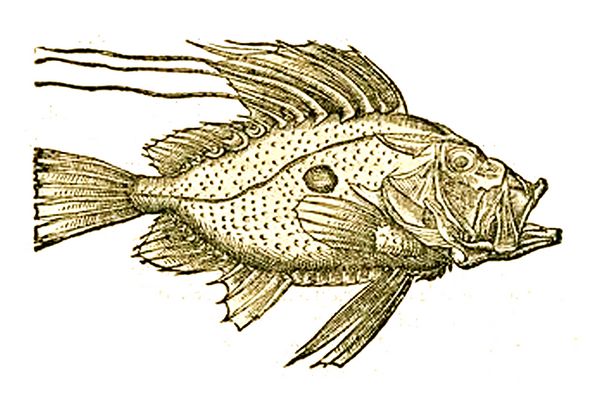Athena Review Image Archive ™
Rondalet drawing of a dory (1556)

Drawing of a dory (Rondalet 1556)
This drawing of a Dory (Zeus faber)
by the 16th century French naturalist Guillaume Rondalet dates from
1556. The popular name dory comes from doree, "gilded," for its
golden color. It belongs to the class of ray-finned fish,
Actinopterygia, the order Zeiformes, and the family Zeidae.
Rondalet
(1507-1566), who ranks among the most accurate naturalistic recorders
of the Renaissance, was a professor of medicine at the university of
Montpellier. Rondalet dissected and illustrated numerous animals, with
his anatomical drawing of a sea urchin the earliest extant depiction of
an invertebrate.
Rondalet’s major published work was an illustrated treatise on fish and other aquatic animals, entitled Libri de piscibus marinis (Book of marine fishes). Published
in 1556, this book covered not only fish such as the dory, but also
marine mammals such as seals and whales, and crustaceans and other
invertebrates. As a comparative anatomist, Rondalet also
discovered and reported basic similarities between dolphins, pigs and
humans (Gudger 1934).
References
Gudger, E.W. 1934. The Five Great Naturalists of the Sixteenth Century: Belon, Rondelet, Salviani, Gesner and Aldrovandi: A Chapter in the History of Ichthyology. Isis 22,(1), pp. 21-40
Rondalet, Guillaume 1556. Libri de piscibus marinis in quibus verae piscium effigies expressae sunt.
.
Copyright © 1996-2020 Rust Family Foundation (All Rights Reserved).